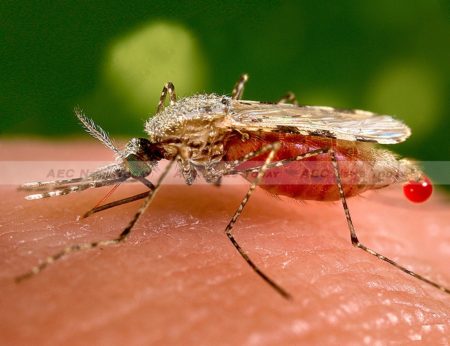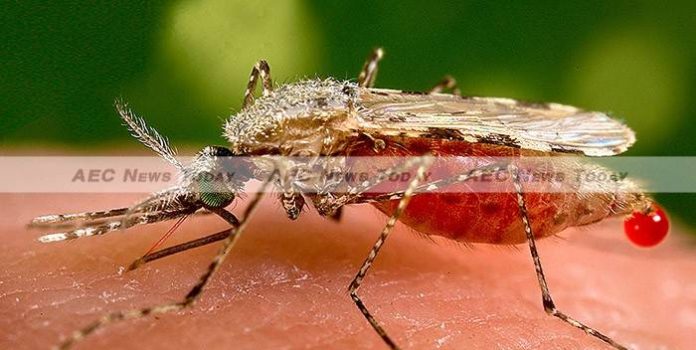New findings from the National Institute of Allergy and Infectious Diseases (NIAID), part of the National Institutes of Health (NIH), confirm dihydroartemisinin-piperaquine, the first-line treatment for Plasmodium falciparum malaria infection in Cambodia, has failed in certain provinces due to parasite resistance to artemisinin and piperaquine.
Dihydroartemisinin-piperaquine is an artemisinin combination therapy (ACT) for malaria that combines potent, fast-acting artemisinin with a long-acting partner drug, piperaquine.
Resistance to artemisinin in parts of Southeast Asia is well-documented, but until now only a few studies have presented clear evidence of piperaquine resistance in malaria treatment.
Additional study findings suggest that artesunate, a form of artemisinin, plus mefloquine, a different long-acting partner drug, should be the first-line ACT for malaria treatment in areas where dihydroartemisinin-piperaquine treatment has failed, the study authors note.

NIAID researchers and colleagues sought to confirm the presence of piperaquine-resistant infections in Cambodia by comparing the efficacy of dihydroartemisinin-piperaquine malaria treatment in 204 malaria-afflicted participants aged 2 to 65 years from three provinces in Cambodia with varying levels of artemisinin resistance.
After monitoring parasite levels in the blood for 63 days investigators found parasites had reemerged despite initial clearance in 45.7 per cent of participants in Pursat, 15.9 per cent of participants in Preah Vihear and 1.67 per cent of participants in Ratanakiri.
The results indicate the ACT malaria treatment is failing in Pursat and Preah Vihear, where artemisinin resistance is common, but remains highly efficacious in Ratanakiri, where resistance is uncommon.

Laboratory tests showed the parasites from dihydroartemisinin-piperaquine failures contained a genetic marker of artemisinin resistance and had a decreased susceptibility to piperaquine, demonstrating that both artemisinin and piperaquine resistance contributed to treatment failures. However, the parasites also showed an increased susceptibility to mefloquine and completely lacked the molecular marker for mefloquine resistance.
These findings formed new World Health Organiztion (WHO) guidelines reinstating artesunate plus mefloquine as the first-line ACT for malaria treatment in Cambodia where dihydroartemisinin-piperaquine treatment has failed.
The findings also provide evidence to initiate surveillance programs to track the spread of piperaquine resistance and clinical trials to test alternative combination therapies.
Written by Chanaki Amaratunga, Pharath Lim, et al. The full report, Dihydroartemisinin-piperaquine resistance in Plasmodium falciparum malaria in Cambodia: a multi-site observational cohort study, can be purchased for from the Lancet for US$31.50. This article was first published on NIAID and is used here with its permission.
Related:
- Drug resistance a major threat to the world, malaria treatment fails in Cambodia (International Business Times)
- NUS researchers make inroads into combating drug-resistant malaria (Channel News Asia)
- Latest Malaria Drug Resistance Sparks Fears (The Cambodia Daily)
- Rising Drug Resistant Malaria in Cambodia a Concern (The Establishment Post)
Latest posts by National Institute of Allergy and Infectious Diseases (NIAID), (see all)
- Experimental Dengue Vaccine Protects All Recipients – March 23, 2016
- NIAID Study Finds Current Cambodia Malaria Treatment Fails – February 10, 2016


